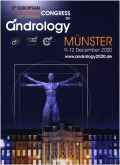- 钛学术文献服务平台 \
- 学术期刊 \
- 医药卫生期刊 \
- 外科学期刊 \
- 亚洲男性学杂志(英文版)期刊 \
null
Novel association between sperm deformity index and oxidative stress-induced DNA damage in infertile male patients
基本信息来源于合作网站,原文需代理用户跳转至来源网站获取
摘要:
Aim: To investigate the impact of abnormal sperm morphology using the sperm deformity index (SDI) on reactive oxygen species (ROS) production and its correlation with sperm DNA damage. Methods: Semen samples were collected from men undergoing infertility screening (n = 7) and healthy donors (n = 6). Mature spermatozoa were isolated and incubated with 5 mmol/L β-nicotinamide adenine dinucleotide phosphate (NADPH) for up to 24 h to induce ROS. Sperm morphology was evaluated using strict Tygerberg's criteria and the SDI. ROS levels and DNA damage were assessed using chemiluminescence and terminal deoxynucleotidyl transferase-mediated fluoresceindUTP nick end labeling (TUNEL) assays, respectively. Results: SDI values (median [interquartiles]) were higher in patients than donors (2 [1.8, 2.1] vs. 1.53 [1.52, 1.58], P = 0.008). Aliquots treated with NADPH showed higher ROS levels (1.22 [0.30, 1.87] vs. 0.39 [0.10, 0.57], P = 0.03) and higher incidence of DNA damage than those not treated (10 [4.69, 24.85] vs. 3.85 [2.58, 5.10], P = 0.008). Higher DNA damage was also seen following 24 h of incubation in patients compared to donors. SDI correlated with the percentage increase in sperm DNA damage following incubation for 24 h in samples treated with NADPH (r = 0.7, P = 0.008) and controls (r = 0.58, P = 0.04).Conclusion: SDI may be a useful tool in identifying potential infertile males with abnormal prevalence of oxidative stress (OS)-induced DNA damage. NADPH plays a role in ROS-mediated sperm DNA damage, which appears to be more evident in infertile patients with semen samples containing a high incidence of morphologically abnormal spermatozoa.

推荐文章
期刊_丙丁烷TDLAS测量系统的吸收峰自动检测
带间级联激光器
调谐半导体激光吸收光谱
雾剂检漏 中红外吸收峰 洛伦兹光谱线型
不同盐度、温度及光照对漂浮浒苔生理生态的影响
浒苔
盐度
温度
光照
生理生态
期刊_联合空间信息的改进低秩稀疏矩阵分解的高光谱异常目标检测
高光谱图像
异常目标检测 低秩稀疏矩阵分解 稀疏矩阵 残差矩阵
内容分析
关键词云
关键词热度
相关文献总数
(/次)
(/年)
文献信息
| 篇名 | Novel association between sperm deformity index and oxidative stress-induced DNA damage in infertile male patients | ||
| 来源期刊 | 亚洲男性学杂志(英文版) | 学科 | |
| 关键词 | |||
| 年,卷(期) | 2005,(2) | 所属期刊栏目 | |
| 研究方向 | 页码范围 | 121-126 | |
| 页数 | 6页 | 分类号 | |
| 字数 | 语种 | 英文 | |
| DOI | |||
五维指标
引文网络
引文网络
二级参考文献 (0)
共引文献 (0)
参考文献 (14)
节点文献
引证文献 (0)
同被引文献 (0)
二级引证文献 (0)
1900(1)
- 参考文献(1)
- 二级参考文献(0)
1987(1)
- 参考文献(1)
- 二级参考文献(0)
1988(1)
- 参考文献(1)
- 二级参考文献(0)
1993(1)
- 参考文献(1)
- 二级参考文献(0)
1994(2)
- 参考文献(2)
- 二级参考文献(0)
1995(1)
- 参考文献(1)
- 二级参考文献(0)
1996(1)
- 参考文献(1)
- 二级参考文献(0)
1997(2)
- 参考文献(2)
- 二级参考文献(0)
1998(2)
- 参考文献(2)
- 二级参考文献(0)
2004(2)
- 参考文献(2)
- 二级参考文献(0)
2005(0)
- 参考文献(0)
- 二级参考文献(0)
- 引证文献(0)
- 二级引证文献(0)
引文网络交叉学科
相关学者/机构
期刊影响力
亚洲男性学杂志(英文版)
主办单位:
中国科学院上海药物研究所
出版周期:
双月刊
ISSN:
1008-682X
CN:
31-1795/R
开本:
大16开
出版地:
上海市太原路294号16号楼302室
邮发代号:
4-648
创刊时间:
1999
语种:
eng
出版文献量(篇)
2771
总下载数(次)
1
总被引数(次)
9935
期刊文献
相关文献
推荐文献
- 期刊分类
- 期刊(年)
- 期刊(期)
- 期刊推荐
亚洲男性学杂志(英文版)2022
亚洲男性学杂志(英文版)2021
亚洲男性学杂志(英文版)2020
亚洲男性学杂志(英文版)2019
亚洲男性学杂志(英文版)2018
亚洲男性学杂志(英文版)2017
亚洲男性学杂志(英文版)2016
亚洲男性学杂志(英文版)2015
亚洲男性学杂志(英文版)2014
亚洲男性学杂志(英文版)2013
亚洲男性学杂志(英文版)2012
亚洲男性学杂志(英文版)2011
亚洲男性学杂志(英文版)2010
亚洲男性学杂志(英文版)2009
亚洲男性学杂志(英文版)2008
亚洲男性学杂志(英文版)2007
亚洲男性学杂志(英文版)2006
亚洲男性学杂志(英文版)2005
亚洲男性学杂志(英文版)2004
亚洲男性学杂志(英文版)2003
亚洲男性学杂志(英文版)2002
亚洲男性学杂志(英文版)2001

 免费查重
免费查重










